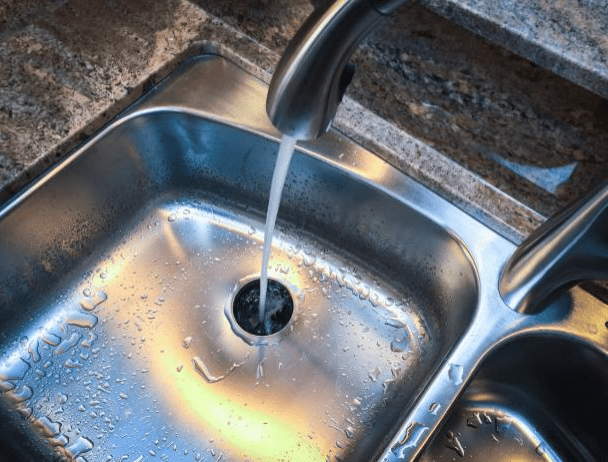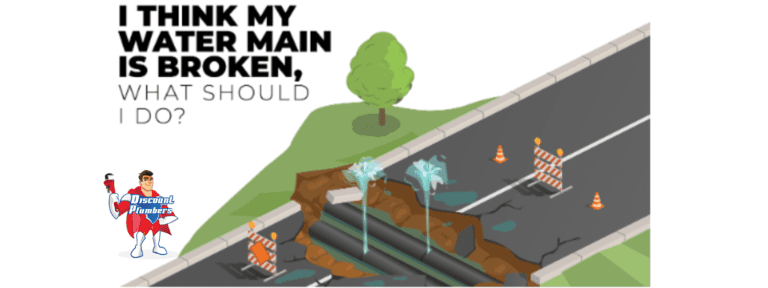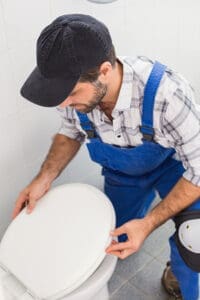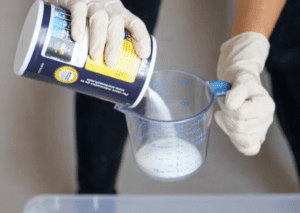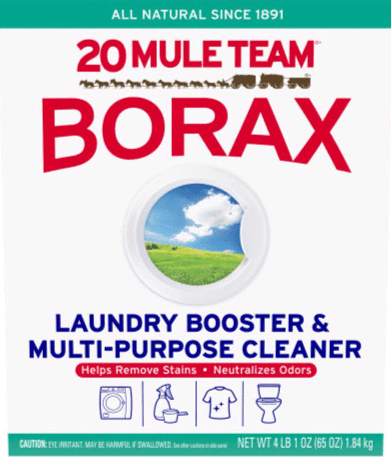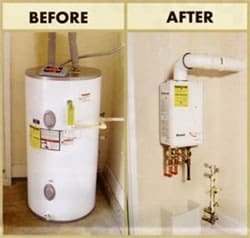Dishwasher Not Draining? Do This.
As a homeowner or renter, dealing with a malfunctioning dishwasher can be a frustrating experience. One of the most common issues that people face is a dishwasher that won’t drain properly. Not only can this cause a mess in your kitchen, but it can also lead to unpleasant odors and potentially even damage to your dishwasher.
Fortunately, there are few DIY tips that you can try before calling in a professional. In this blog post, we’ll discuss some of the most effective strategies for fixing a dishwasher that won’t drain, so you can get back to enjoying clean dishes in no time.
NOTE: Before unplugging and opening your dishwasher, lay old towels under it before taking steps to unbolt its lower front panel (many can easily come off). Additionally, check its hose for signs of kinks or blockages.
Check the Drain Hose
As soon as you open up your dishwasher and find water accumulating inside it, your first reaction may be that this represents a major plumbing emergency. But instead, the issue may be resolved through simple measures.
Most plumbing-related causes for why a dishwasher won’t drain can be traced back to its drain hose, which connects the pump to either the garbage disposal or air gap (more on these shortly) and flushes away dirty water from your machine.
Make sure this hose is connected correctly without kinks or visible clogs forming; or try blowing through or pushing with something thin like a wire coat hanger to see if clearing out blockages works.
After your dishwasher hose leaves the bottom, it typically passes through a drain solenoid or air gap (described above) before connecting to either your garbage disposal or under sink drain connection. Food debris left in your disposer could potentially clog it, preventing its clean water from reaching the trough and exiting via your hose.
You should check its sump pump screen at the bottom to identify foreign material; alternatively you could test its check valve with a multimeter set to Ohm (O). Replace or repair as necessary.
Check the Drain Tube
As water drains from a dishwasher, it travels through a tube from its source at the bottom of the tub to either your garbage disposal or sink drain – should this tube become pinched, kinked, or blocked, it could stop your machine from draining correctly and may result in flooding issues for you and/or others in the house.
To check this tube, unplug the dishwasher and place rags beneath it so that any excess water doesn’t leak onto your floor. Next, open up your lower front panel by either snapping or screwdriving; if necessary consult your owner’s manual if unsure how.
Now you will have access to the interior of a drain tube, with multiple openings through which water runs. Debris such as broken plastic or stickers, porcelain chips or food scraps may clog this tube; to clean it properly you can use either a wire brush or kitchen pipe cleaner to clear away any obstructions visible in this process.
It’s important to examine the air gap cylinder that’s located inside your drain line hose near where it connects with your disposal or sink drain. An air gap is required in some areas in order to protect drinking water supplies from contamination by sewerage waste. The top of this cylinder has an opening; you can loosen its clamp and place its end into a bucket in order to see if you can cause a clog to clear away.
Check the Garbage Disposal
Your drain hose (or tube) connecting your dishwasher to the garbage disposal may become blocked if food remnants clog it with dirt or grime, as well as age-related changes to its construction that cause it to become clogged or kinked over time.
Before beginning troubleshooting, make sure that you unplug and switch off the disposal and the breaker that serves it – this will prevent an accidental electrocution or electrical fire from taking place. Next, place old towels inside your dishwasher so as to absorb any remaining moisture.
Remove the basket from the bottom of your dishwasher and use a plastic cup to scoop out any smelly, stagnant water that remains. If there’s still excess in the tub, towels or wet/dry shop vac can help absorb it.
Check your garbage disposal drain port to see if there is a small, round plastic plug blocking the hose. If this is the case, remove it and run your dishwasher again; if that still won’t drain then more serious issues with either your garbage disposal or plumbing need to be addressed immediately – most likely by calling in professional plumber.
Likewise if your drain hose isn’t connected properly (or receiving enough suction power to move food waste through), or isn’t pulling through enough food waste you will require replacement of this piece of pipework.
Check the Controls
At the conclusion of every cycle, some water may remain in the filter area of a dishwasher. Excessive standing water that does not vanish after an entire cycle typically indicates that either your drain hose or sink drain connection has become blocked up; unblocking them should solve your issue.
Disconnect the hoses from both your garbage disposal and sink drain connections and inspect them for signs of clogging or wear and tear. Food debris or garbage debris should be free from build-up in the hose; also, ensure its clamp is securely in place. If one or both connections appear clogged or worn down, consider purchasing new ones immediately.
Drain valves can become blocked with debris. To inspect this in your dishwasher, take steps such as taking away its cover plate near the floor of the machine and looking inside. Pistons and nuts within check valves can become jammed closed with debris accumulation; so be sure they remain clear.
If your dishwasher does not feature a check valve, inspect its upper sump assembly for signs of blockage. This section houses water that flows to the drain pump; press or reset button and observe for three-inch column of water to appear through small center tube when pressing drain button or reset. If not, most likely control board is to blame and will require replacement.
In Conclusion
A dishwasher that won’t drain can be frustrating, but it doesn’t have to mean the end of your appliance’s life. By following the DIY tips outlined in this article, you can troubleshoot and fix many common drainage issues on your own. However, it’s important to remember that some problems may require the help of a professional.
If you’re unsure about any aspect of your repair, don’t hesitate to contact a licensed technician at Discount Plumbers. With proper maintenance and care, your dishwasher can continue to serve you well for years to come.
The importance of having a reliable and trustworthy plumber cannot be overstated. Whether you are dealing with a minor leak or a major plumbing emergency, the team at Discount Plumbers is always ready to provide you with the fast and reliable service you need.
With years of experience and a commitment to customer satisfaction, you can trust us to get the job done right the first time. While we’re located in the Minneapolis/St. Paul area, we provide “plumbers near me services” in 65 surrounding metro-areas.
So, if you are looking for a reliable plumber that you can count on, contact Discount Plumbers today. We are always here to help!







